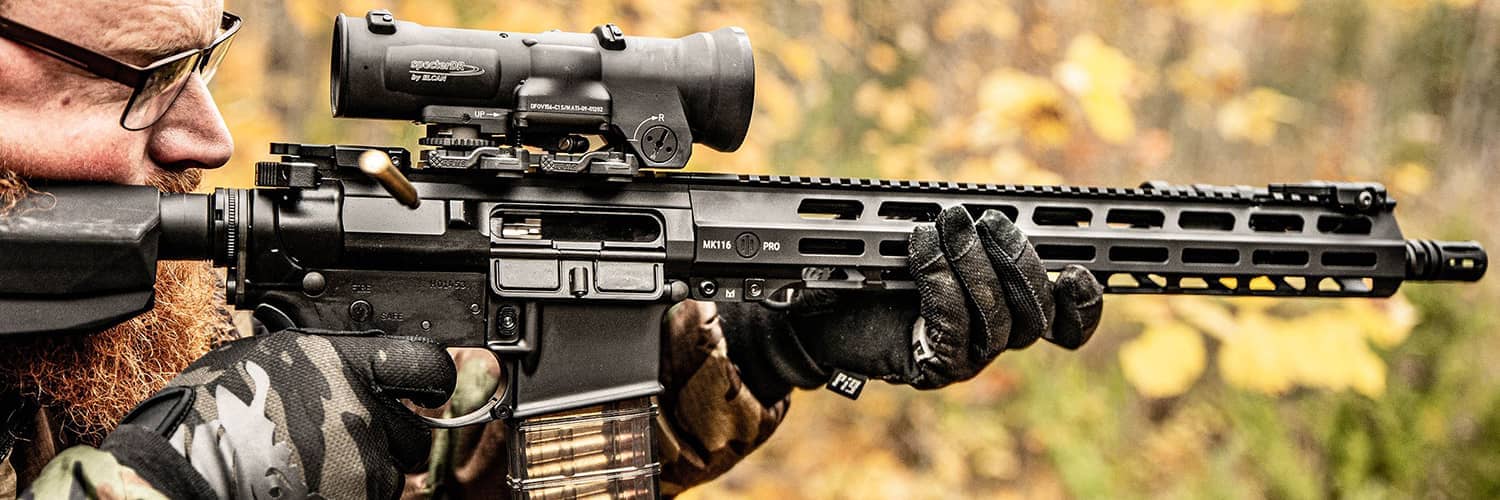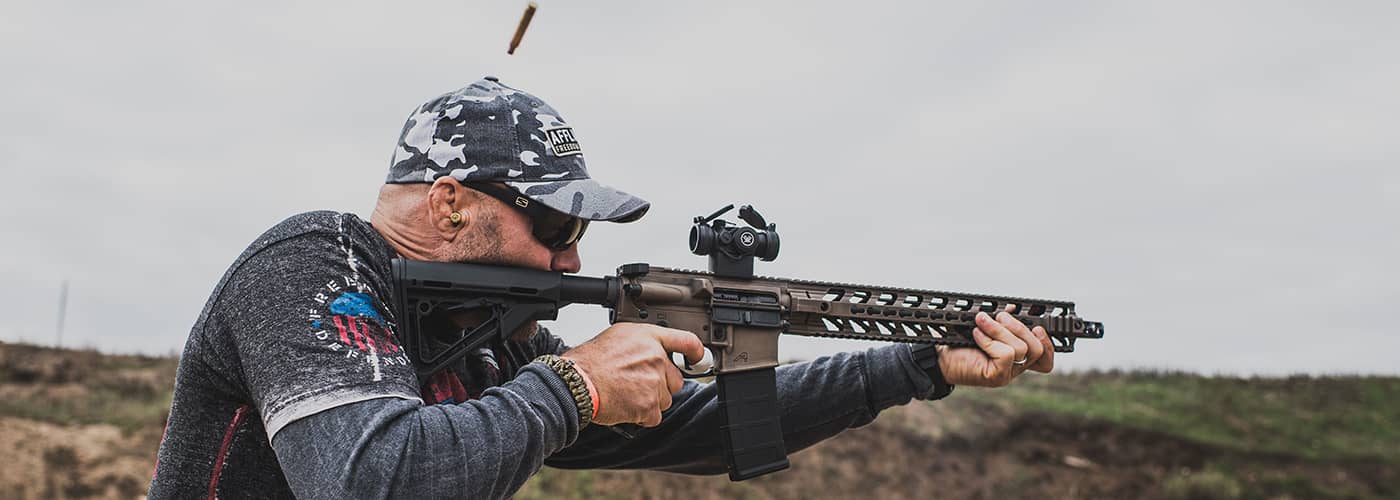
Knowing correct trigger pull techniques is crucial for accurate shot placement. Sure, there are some gadgets available on the market that can help with accuracy, but nothing beats putting time into practicing proper finger placement on the trigger of your firearm.
Here's everything you need to know to make every shot worthwhile on the range.
The Stages of Correct Trigger Pull
When most people purchase a firearm, they start by looking at its size, ergonomics and weight. These elements all play a role in how comfortable the user is and how well the gun suits a given application, but the trigger is the one component a shooter moves to cause a bullet to exit the chamber. As such, testing it should play an integral role in the buying process when you're exploring various firearms.
The trigger pull has several stages:
- Initial slack: You can think of this as the space between the trigger's resting place and the point at which it releases the hammer or firing pin to fire the gun.
- Trigger break: This is the moment of the pull where the trigger slips off the sear surface, activating whatever mechanism the gun uses to strike a primer.
- Stop: The stop is the point where the trigger no longer moves rearward. In some cases, a gun's trigger break and stop will be the same position. In those where the trigger continues backward after firing, this movement is called overtravel.
- Reset: The trigger will revert back to its original position when you lessen the rearward pressure after reaching the stop. If you "ride the reset" back forward, you will feel and hear a click letting you know you're ready for another shot.
Knowing the stages of a trigger pull will help you focus on following through with your shot. Ideally, every trigger pull will be the same — a controlled movement with no left or right deviation that might impair your accuracy.
4 Ways to Practice Trigger Control
Perfecting your trigger pull will help with shot placement. It is relatively simple to practice your trigger pull technique before heading to the field or range using these common drills:
1. Rubber Band Method
All you need to perform the rubber band drill is a standard rubber band. Position the rubber band around the thumb opposite your trigger hand. With your trigger finger, pull back on the rubber band at a 90-degree angle. Some people draw a straight line on a sheet of paper to check that the rubber band is moving correctly — directly backward, as a trigger should.
The rubber band method is effective for practicing your trigger pull since it places a small amount of tension on your index finger. Using a rubber band to rehearse your motion can be done anywhere. Prioritize solid technique before you visit the range.
2. Pencil Method
Another common drill to practice your trigger pull includes using a pencil or pen. Start out by placing a pen or pencil in the hand opposite your firing hand. Practice pulling the writing utensil to the rear to assess your technique. Again, this will help build up the strength of your index finger for controlled firing.
3. Fire Without Ammunition
One of the best trigger pull tips for all experience levels is to practice dry firing at a paper target. Remove any ammunition from your firearm, assume your shooting position and pull the trigger until you feel comfortable with this action.
Some people take this practice method a step further by positioning a spent casing or coin on top of the gun near the muzzle. You should be able to squeeze the trigger without making the object fall off.
4. Find the Slack of the Trigger
Knowing the travel distance from where your trigger sits naturally and where it fires helps you improve your shooting precision. This is known as taking the slack out of your trigger. Remove all ammunition from your firearm and practice finding the exact point at which the trigger fires the gun.
Put your finger on the trigger and pull back until you feel pressure indicating that you're just short of the break point. Rehearse identifying this point to understand the behavior and weight of your firearm's trigger so the gun goes off at the precise moment you intend.
Perfect Your Shooting Techniques

Correct trigger pull is one of the most vital elements of shooting accurately. Follow these trigger pull tips to set yourself up for success:
Make Sure You Have Proper Finger Placement on the Trigger
The pad of your index finger between the tip and first knuckle should make contact with the trigger. Using any other part of your finger increases the risk of poor performance.
Additionally, the way you bend your finger to fire your gun affects bullet travel. You want to bend your index finger at the second knuckle only rather than curling it. Looking at your finger, you should be making a 90-degree angle by the time you reach the stop. Those seeing their rounds pull to the left or right should practice bending their finger at the second knuckle, as this phenomenon can be a sign of curling the index finger too much.
Think Less About Anticipating Your Shot
You want to keep your eyes open while firing a gun. Some people anticipate shots by closing their eyes in preparation for recoil, but this flinching results in a loss of control. Wear proper eye and ear protection to increase your confidence when handling a firearm.
Practice Proper Breath Control
Practice trigger control by learning how to regulate your breathing. You want to have steady breaths while you're lining up your shot, so refrain from holding your breath prior to firing. Instead, find your rhythm when breathing and pull back on the trigger during a natural pause.
Assess Your Shooting Stance
Your stance will affect your shot. Think of your shooting stance as if you wanted to catch someone who was running toward you. Rather than standing straight up with your feet close together, you should have your legs slightly bent and spread out for stability.
Leaning forward with your arms in front of you allows you to absorb the shock from the recoil. With the right shooting stance, you can fire your gun smoothly and quickly find your target again to position yourself for follow-up shots.
Shop Wing Tactical for Drop-in Triggers and Training Gear

If you're looking for a smoother, crisper trigger group to help improve your pull, you'll find it at Wing Tactical. We provide exceptional customer service, high-quality merchandise and real value. Give yourself an edge with AR-15 parts and a variety of accessories you need for your setup. We offer you next-day shipping on orders to get you what you need as fast as possible.
Browse our products online now and make a purchase with us today. You can also contact us with further questions